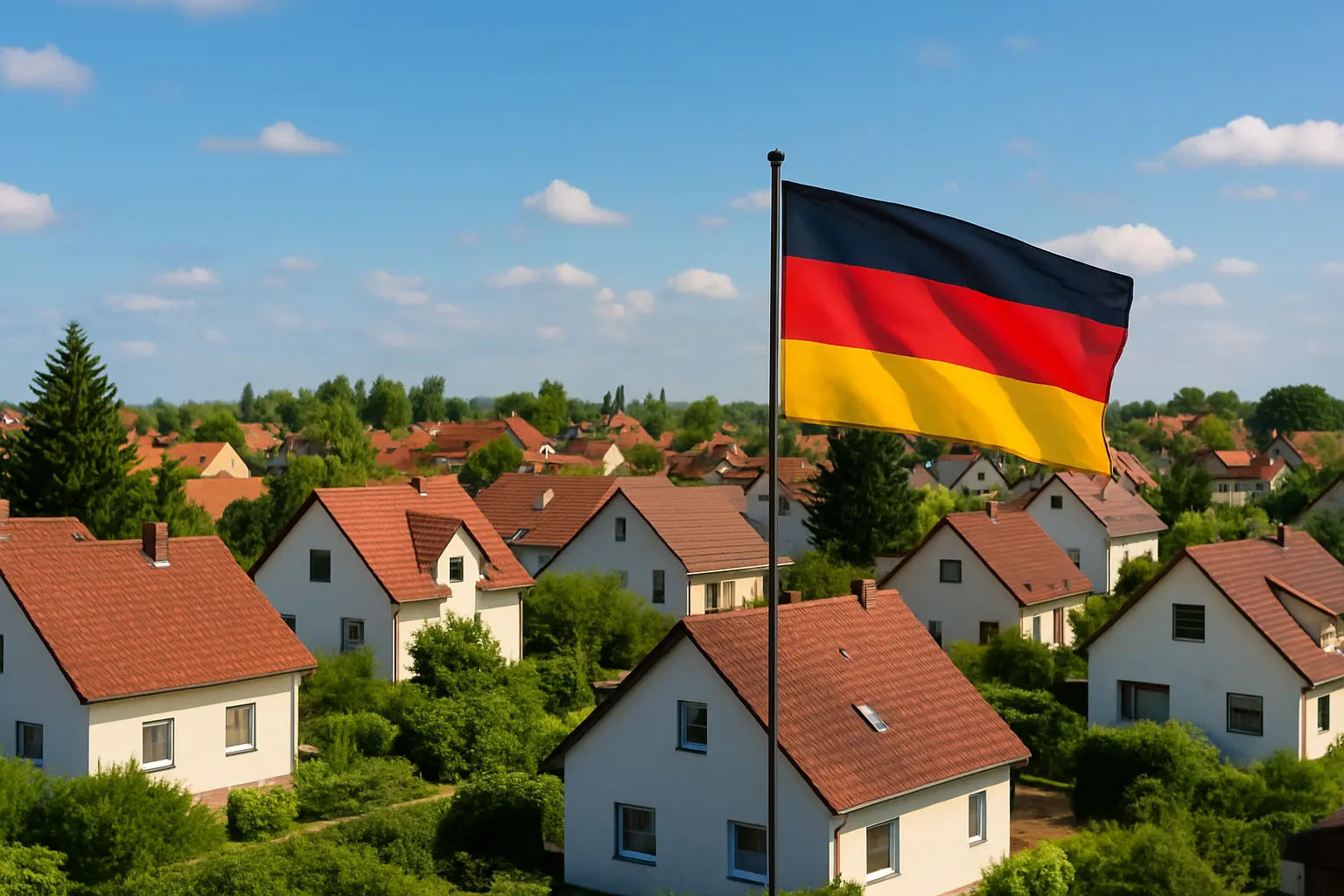Key Facts of Residential Housing Development in Germany
- The total available residential housing stock in Germany grew YoY by 0.5% or 238,500 dwellings from 2023 to 2024 and by 6.1% (2.5 million) over a 10 year period;
- Homes are getting bigger on average and grew by 2.5m2 compared to 10 years ago, but the average quantity of rooms is in sharp decline;
- The homes adapt for families become less responding to the overall decline of the traditional family model;
- The number of people living in overcrowded living arrangements in Germany continues to grow and reached 11.3%, almost doubling from 10 years ago.
Housing stock in Germany 2024
At the end of 2024, there were around 43.8 million dwellings in Germany. According to the Federal Statistical Office (Destatis), this was an increase of 0.5%, or 238,500 dwellings, compared to the end of 2023. Over a ten-year period, compared with the end of 2014, the housing stock increased by 6.1% or 2.5 million dwellings. The total residential floor area grew by 9.1% during this period, reaching 4.1 billion square meters.
Of the 43.8 million dwellings at the end of 2024, around 42.9 million or 98.0% were located in residential buildings, more than half of them (54.8% or 23.5 million dwellings) in multi-family houses. On average, each of the 3.5 million multi-family houses across Germany contained 6.7 dwellings. The 13.5 million single-family houses accounted for just under one third (31.4%) of the dwellings in residential buildings. 5.5 million dwellings (12.8%) were in the 2.7 million two-family houses, and another 0.4 million (1.0%) were in residential homes (for example for students, refugees, or the homeless).
Around 890,000 dwellings (2.0%) are located in non residential buildings. These include, for example, caretaker apartments in school buildings or apartments situated above commercial spaces in inner-city areas.
Bigger Apartments, less rooms: the market is adjusting to lifestyle changes
The total residential area of all dwellings increased by 9.1% from 2014 to 2024, slightly more than the number of dwellings (+6.1%). As a result, dwellings in Germany became larger on average: at the end of 2024, the average living space per dwelling was 94.0 square meters, and the average living space per capita was 49.2 square meters. Compared with 2014, this corresponds to an increase of 2.5 square meters per dwelling (+2.8%) and 2.7 square meters per inhabitant (+5.8%).
Because the housing stock grew slightly faster than the population as a whole since 2014, the ratio of “persons per dwelling” decreased slightly: at the end of 2024, the ratio was just over 1.9 persons per dwelling, compared with just under 2.0 in 2014. This numbers do not consider the geographical distribution of housing in Germany, but only the overall quantity available in Germany.
While this number seems to indicate better living situation for everybody, a detailed look at the average rooms per home indicates otherwise: apartments able to house families are in free fall compared to smaller 1 room and 2 room units.
- The combination of refractioning of bigger apartments into multiple smaller units and newly build units makes the two room apartment the category with the sharpest increase;
- 1 room apartments, which are practically not built anymore, grew from 1.4 million to 1.6 million in only 6 years indicating that refractioning for wealth building is a significant driver;
- The overall average of rooms per unit declined from 4.25 rooms to 3.98 rooms on average in Germany.
Housing affordability in Germany is increasingly becoming a problem
Even though the amount of housing is growing, more and more people in Germany live in cramped housing conditions.
- In contrast to the EU average, the share of people living in overcrowded housing in Germany rose from 7.8% to 11.5% between 2019 and 2024.
- The EU average fell during the same period, from 28.3% to 23.9%.
- Housing conditions remain particularly critical in urban areas.
It remains to be seen whether Germany will manage in the long term to create new housing in metropolitan areas or expand infrastructure sufficiently so that suburbs become better connected and more attractive as residential areas, thereby easing pressure on urban centers.

Leave a Reply
You must be logged in to post a comment.